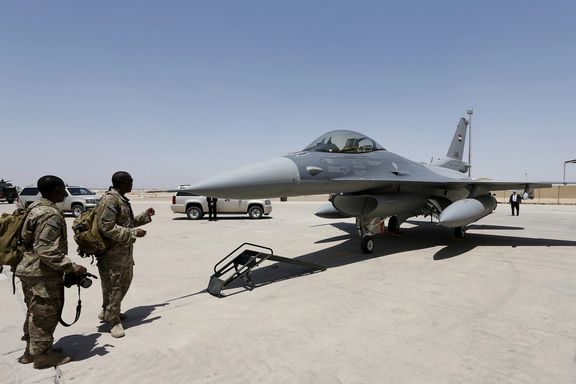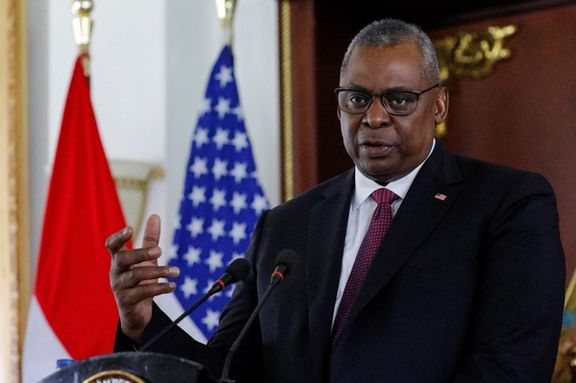US Threatens More Attacks As IRGC Remains Defiant

Iran is not afraid of the United States, a top IRGC general said Monday, although more than a month after the start of the Gaza war, Tehran has treaded a careful line.

Iran is not afraid of the United States, a top IRGC general said Monday, although more than a month after the start of the Gaza war, Tehran has treaded a careful line.
Amir Ali Hajizadeh, the commander of Iran’s aerospace force claimed the US is communicating with Iran in a humble tone about preventing an escalation in the Middle East. He also repeated familiar rhetoric that “Iran is currently at the pinnacle of power and cannot be threatened.”
Hajizadeh’s defiant remarks followed a third US strike on Iranian targets in eastern Syria Sunday night, after Iranian proxy militia groups continuously attacking US bases with drones and rockets.
Following the US strike, Defense Secretary Lloyd Austin left open the possibility of more action against Iran-linked groups if attacks against American forces in Iraq and Syria do not stop.

The US military’s air strike Sunday targeted a training facility near the city of Albu Kamal and a safe house near the city of Mayadeen. Iran’s Revolutionary Guard have set up a strong presence in the region, trying to facilitate the flow of weapons and ammunition from Iraq into Syria and Lebanon.
The strikes came after at least 40 attacks against US and coalition troops in Iraq and Syria by Iran-backed forces in recent weeks, as regional tensions mount over the Israel-Hamas war. At least 45 US troops have suffered traumatic brain injuries or minor wounds.
"These attacks must stop, and if they don't stop, then we won't hesitate to do what's necessary, again, to protect the troops," Austin told reporters at a news conference in Seoul on Monday.
Iran has used the tactic for years to put pressure on the US, with the ultimate goal of forcing Washington to withdraw its military forces, which would allow Iran a freer hand to project power in Iraq and Syria. Iran escalated such attacks in December 2019, before former President Danald Trump authorized the killing of Iran’s top Middle East operative Qassem Soleimani in an air strike in January 2020.
The attacks had subsided for more than a year before the October 7 Hamas terror raid into Israel that ignited the Gaza war.
Austin said the latest air strikes in eastern Syria targeted facilities used by Iran's Revolutionary Guard Corps and related groups.
"These strikes are intended to disrupt and degrade the freedom of action of these groups, which are directly responsible for attacks against US forces in Iraq and Syria," Austin said.
The United States has 900 troops in Syria, and 2,500 more in neighboring Iraq, to advise and assist local forces trying to prevent a resurgence of Islamic State, which in 2014 seized large swathes of both countries but was later defeated.
There is growing concern that the Israel-Hamas conflict could spread through the Middle East and turn US troops at isolated bases into targets of heavier weaponry than the smaller rockets and one-way drones seen so far.
The United States has deployed additional air defenses and sent warships and fighter aircraft to the region since the Israel-Hamas conflict erupted on October 7, including two aircraft carriers, to try to deter Iran and Iran-backed groups.
The number of troops added to the region is in the thousands.
Reuters has reported that the US military was taking new measures to protect its Middle East forces during the ramp-up in attacks by suspected Iran-backed groups and was leaving open the possibility of evacuating military families if needed.
The measures include increasing US military patrols, restricting access to base facilities and boosting intelligence collection, including through drone and other surveillance operations, officials say.
It was still unclear whether anyone was killed in the Sunday US strikes in Syria.